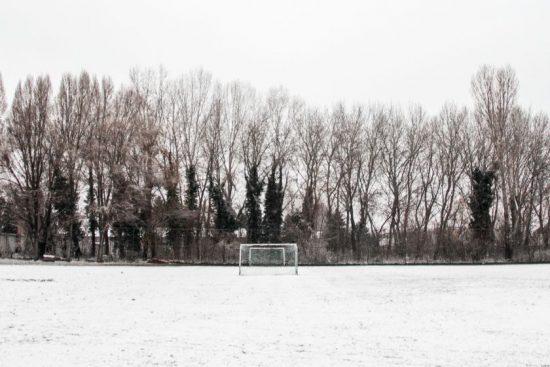Dealing with Frost on Grassroots Sports Pitches & Playing Fields
Frosts are inevitable with the low temperatures that we experience over the winter months. As a result, grassed sports pitches are often at risk of serious damage. As well as grassroots, it is equally important that soil testing be done in the winter months to ensure the grass is healthy.
As the sponsor of a grassroots U12’s football team, we know only too well the importance of having a well-kept pitch, so we thought we would share some tips on how to protect your sports pitch and maintain a good sward at this time of year.
THINGS TO CONSIDER WHEN DEALING WITH FROST ON PITCHES
- Clay soils tend to hold moisture for longer and will be more susceptible to flooding, freezing or slipperiness, all of which can result in turf damage.
- Frozen ground is prone to waterlogging, so even if the frost or snow has melted, this does not mean that it is safe to be played on.
BEST PRACTICE FOR FROST ON SPORTS FIELDS
- Avoid foot traffic or any machinery on the turf while there is a frost present. If you do not follow this step, then it can end up bruising the grass and leaving behind black footprints or blackened areas of damaged grass, which will not recover until growth resumes far into spring.
- When checking the pitch following a frost, ensure that you have checked all areas, as bare ground is more susceptible to freezing. Typically, this means areas around the goalmouth, try line or box will need to be checked before play.
- Avoid aerating the ground when there are frosts forecast or temperatures have dropped, as it gives more opportunity for the ground to freeze lower down, resulting in it reaching the roots and causing turf stress as a result.
- Fertiliser applications are to be avoided when there are frosts forecast.
- Do not use snow-melt products on or near sports pitches, as this will burn the turf and potentially kill it.
HOW TO DEAL WITH SNOW FALL ON GRASSROOTS PITCHES
Clearing snow from pitches at a grassroots level can be labour-intensive, especially if you do not have the equipment that professional clubs would have. It’s not necessarily ‘snow stops play’, but take note of the following:
- If the soil underneath the turf is frozen, any falling snow will insulate it, slowing down the time it takes for the ground to thaw. This will increase the chances of ‘Snow Mould’ disease, which may then require fungicide treatment. This is why soil testing is crucial in the fertilisation and improvement of sports grounds.
- If the soil temperatures were high when snow fell, there would be the same heightened risk of disease.
- If there has been only a light snowfall, there is potential to remove the snow using simple methods such as heavy-duty snow shovels, drag brushes or mats. Handheld air blowers are also a good option if you have the availability of one. Large pieces of equipment should be avoided to prevent the frozen ground and turf from damage.
- Heavy snowfall is an issue, as it would require a significant workforce just to remove a good amount of the snow. For this reason, if it is too bad, sports or matches may have to be postponed until it has thawed naturally.
- If there is frost now forecast during a match, it could be an idea to have line markings in a different colour (such as blue or red) so that they are still visible against the white frost.
Conclusion
All in all, the key is to be proactive and take preventive measures to protect the playing surface, allowing for safe and enjoyable sports activities even during colder weather. Soil testing and fertilisers can prove effective in improving the quality of sports pitches and playing fields.
If you need further help or information, visit our website today or call 0330 165 5568 to speak to one of our friendly advisors.





